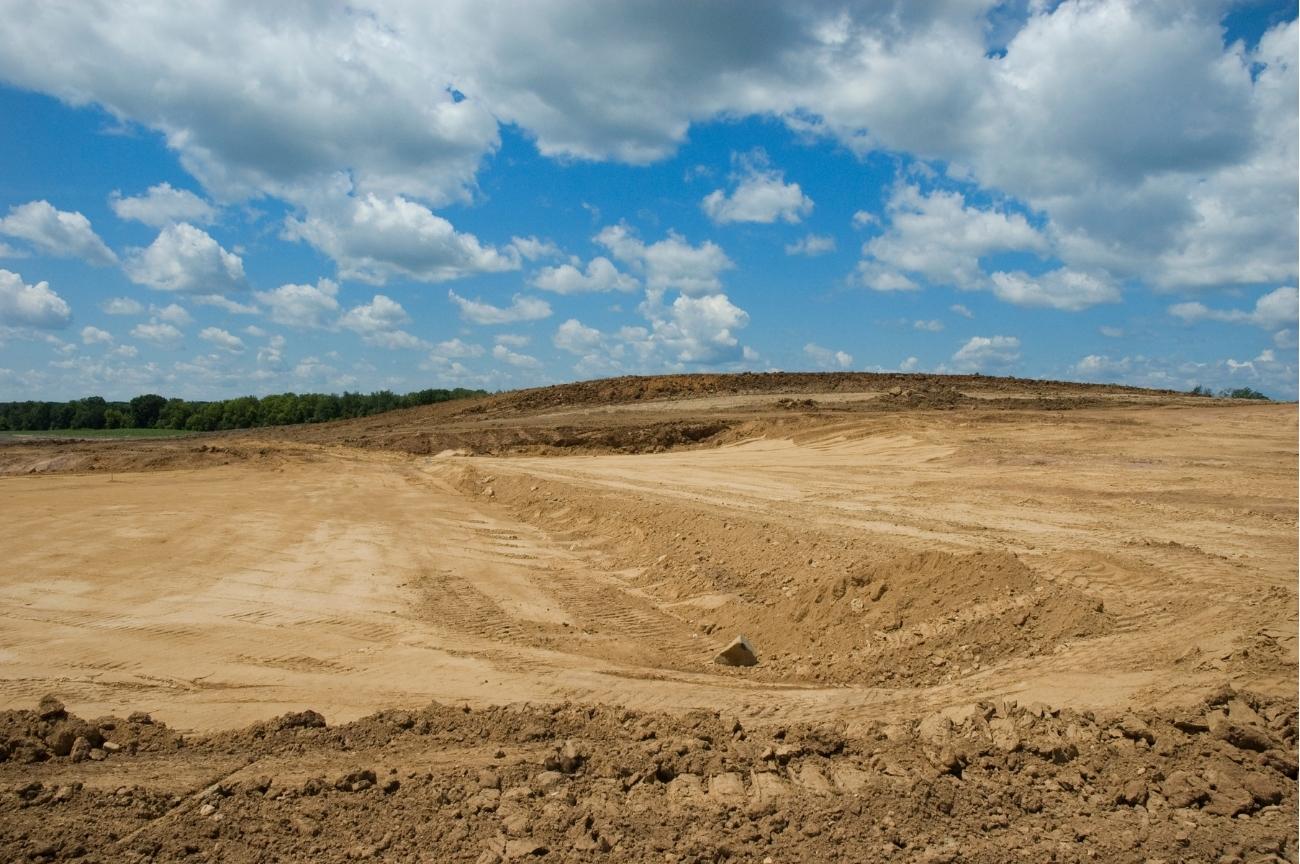Site grading is more than just leveling ground. It’s a crucial stage in any construction project that often determines the success of the build. Many contractors focus on immediate tasks at hand, but understanding the finer nuances of site grading can make a significant difference. This article delves into the overlooked aspects of site grading, revealing insights that can elevate your projects.
Introduction
Site grading is a fundamental step in construction that sets the stage for a successful project. It involves leveling and reshaping the land to ensure proper drainage, stability, and overall site usability. Without effective grading, projects may face costly setbacks or even structural failures.
Hidden Elements in Site Grading
In this article, we’ll delve into site grading insights that many contractors overlook. By understanding these hidden elements, you can improve project outcomes and avoid common pitfalls.
Key Mistakes to Avoid
Here are some critical mistakes to be aware of:
- Ignoring drainage issues: Proper drainage prevents water accumulation and soil erosion.
- Underestimating soil composition: Testing soil types can prevent foundation problems later.
- Neglecting local regulations: Always check zoning laws and building codes before starting.
Embracing Advanced Techniques
Additionally, consider embracing advanced techniques to enhance your grading practices:
- 3D Grading Technology: This can help visualize the site better and improve accuracy.
- Laser Grading Systems: These ensure precision and reduce material waste.
Improving Project Outcomes
By the end of this article, you’ll gain practical knowledge that can elevate your projects. You’ll learn not just what site grading involves, but how thoughtful attention to detail can significantly impact your results.
Let’s explore how these insights can guide you to better, more efficient grading practices.
Section 1: Understanding Site Grading
What is Site Grading?
Site grading involves the process of modifying land surfaces. This essential step prepares a site for construction and ensures stability. Typically, it includes leveling areas, cutting and filling land, as well as managing slopes. Proper site grading sets the foundation for future structures, roads, and utilities.
Contractors must assess the site to determine the correct grading approach. This includes examining the topography and soil characteristics. It’s not just about moving dirt; it’s about creating a safe and manageable environment for construction. A well-graded site helps mitigate risks and enhances the efficiency of subsequent project phases.
Why Site Grading Matters
Proper site grading offers numerous benefits. First, it ensures effective water drainage, which can prevent significant issues down the line. Poor grading can lead to water pooling, erosion, and damage to property. Such drainage concerns may also lead to increased maintenance costs and structural failures.
Second, adequate grading contributes to the overall stability of the construction. When a building sits on uneven ground, stress can accumulate, leading to cracks or even complete failure. Thus, understanding grading can save time and money in the long run.
Finally, good site grading helps with aesthetic appeal. An attractive landscape enhances property value. Well-planned slopes and elevations create pleasing views and usable outdoor spaces. When grading is done right, it lays the groundwork for both function and beauty in any construction project.
In summary, site grading isn’t just a procedural step—it’s a vital investment in your project’s success. Understanding its nuances can help contractors avoid costly mistakes and ensure that the structure stands strong.
Section 2: Common Mistakes in Site Grading
Overlooking Site Conditions
Contractors often underestimate the importance of assessing site conditions before grading. Each site presents unique challenges, influenced by factors such as soil type, topography, and existing vegetation. For instance, clay-rich soils can retain water, while sandy soils drain quickly. Ignoring these characteristics can lead to inadequate grading and drainage issues down the line.
To avoid these pitfalls, conduct a thorough site analysis. Start by examining the soil type with a simple soil test. This quick assessment can reveal its drainage capabilities and overall stability. Additionally, evaluate the slope of the land. Is it graded to direct water away from the foundation? Understanding these elements empowers contractors to plan effectively and prevent costly mistakes.
Neglecting Proper Drainage
Proper drainage is essential in site grading. Without it, water can pool around structures, leading to erosion or foundation damage. Common issues include improper slope angles and clogged drainage systems. Contractors often assume drainage will work itself out, but neglecting this aspect can spell disaster.
To ensure effective drainage, create a grading plan that directs water away from buildings. Use tools like French drains or catch basins to facilitate proper flow. Always check local guidelines to comply with regional water management regulations. This proactive approach not only protects the construction site but also enhances the longevity of the structure.
Ignoring Local Regulations
Understanding local regulations is crucial in site grading. Each region has specific zoning laws and building codes that govern grading practices. Ignoring these rules can lead to fines, project delays, or even total shutdowns. It’s essential to research zoning laws before starting any grading work.
Expand your knowledge of local regulations by consulting government websites or local building departments. Attend workshops or seminars to stay updated. This foundational knowledge not only saves you from legal issues but also builds your credibility as a contractor. Compliance reflects professionalism and dedication to high-quality work.
By addressing these common mistakes, contractors can elevate their grading practices. A deep understanding of site conditions, a solid drainage plan, and awareness of local regulations will undoubtedly lead to successful projects. Keep these insights in mind as you plan your next grading project.
Advanced Site Grading Techniques
Site grading might seem straightforward, but several advanced techniques can significantly enhance your project’s success. By embracing these methods, contractors can ensure better accuracy and performance in their grading plans. Let’s dive into some of these essential techniques.
Topographic Surveying
Topographic surveying is a vital tool in the grading process. This technique involves mapping the contours of the land to understand how the terrain interacts with water drainage and vegetation. A well-executed topographic survey clarifies how different sections of the site will affect grading decisions.
By utilizing topographic data, contractors can create precise grading plans. This information allows for better predictions of potential erosion areas and water pooling spots. Ultimately, using topographic surveying leads to safer, more efficient grading outcomes.
Grading Design Software
Technology has transformed many fields, and site grading is no exception. Grading design software facilitates creating comprehensive plans that account for various site conditions. Programs like AutoCAD Civil 3D and Trimble Business Center provide advanced tools to visualize grading scenarios.
These software tools allow contractors to model different grading options quickly. By simulating potential designs, contractors can optimize for factors such as drainage and soil stability. The end result? Better-informed decisions and smoother project execution.
Soil Stabilization Techniques
Soil stabilization is critical when dealing with weak or loose soils. Various methods exist, including chemical stabilization, mechanical stabilization, and the use of geosynthetics. Each approach has advantages depending on the site’s specific needs.
For example, chemical stabilization can improve soil strength and durability, making it suitable for construction. Mechanical stabilization, on the other hand, involves compacting soil to increase its load-bearing capacity. Understanding these techniques equips contractors with the knowledge to choose the right method for their projects.
In summary, these advanced site grading techniques offer valuable insights for contractors. Whether it’s through precise surveying, leveraging technology, or implementing soil stabilization, enhancing your grading practices will lead to better project outcomes. As a contractor, mastering these techniques can set you apart from the competition. Embrace these tools and techniques for a smoother path ahead in your construction projects.
Section 4: Secret Insights from Experienced Contractors
The Importance of Collaboration
Site grading isn’t a solo endeavor. Successful projects often stem from strong collaboration. When contractors, engineers, and architects work together, they combine their unique perspectives. This teamwork enriches site assessments. For instance, engineers can provide vital soil analysis that contractors might overlook. Architects might suggest design elements that can affect grade. Together, they create a comprehensive grading plan. This collaboration can save time and resources, leading to smoother project execution.
Also, regular communication during the grading phase helps anticipate challenges. For example, if unexpected soil shifts occur, a joint review can quickly adjust plans. Therefore, foster open lines of communication among your team. By rallying around a shared vision, you enhance the project’s success.
Future-Proofing Your Grading
Future-proofing your grading means planning beyond the immediate project. Consider how site grading impacts potential renovations or expansions. If you grade a site for current needs only, you may face complications later. Well-thought-out grading enhances the plot’s long-term usability. For example, a slope too steep for future building cannot be simply adjusted later.
Think ahead. Assess potential future constructions that could arise. Use flexible grading techniques that allow for easy adjustments. This foresight will save money and become a selling point for future owners. Remember, proactive planning today avoids setbacks tomorrow.
Emphasizing Sustainability
Sustainability in grading isn’t just a trend; it’s a necessity. More clients demand eco-friendly practices. Sustainable grading minimizes environmental impact while maximizing efficiency. Start by using eco-friendly materials, such as permeable pavement. This not only benefits the environment but can also enhance drainage performance.
Additionally, consider native vegetation for restoration. This approach reduces water runoff and stabilizes soil naturally. Incorporate sustainable techniques into your grading plans to improve project appeal. Clients appreciate contractors who prioritize green practices. By adopting these methods, you position yourself as a leader in environmentally conscious construction.
Applying Grading Insights to Your Projects
Assessing Your Current Knowledge
Before diving into new grading techniques, take a moment to assess your current knowledge. Understanding what you know about site grading can help you identify gaps and areas for improvement. Here are some questions to consider:
- What grading techniques do you currently use?
- Do you understand how soil type affects grading outcomes?
- Are you aware of local regulations impacting grading practices?
By reflecting on these questions, you can pinpoint strengths and weaknesses in your grading approach. This self-assessment will serve as the foundation for your growth.
Implementing Best Practices
Once you’ve evaluated your knowledge, it’s time to implement best practices. Here are some actionable tips to enhance your site grading projects:
Conduct Thorough Site Assessments: Always study the site conditions, including soil type, vegetation, and topography. Accurate assessments lead to effective grading plans.
Prioritize Drainage: Implement proper drainage systems in your grading. This prevents water accumulation, reducing erosion and structural issues down the line.
Collaborate With Experts: Engage with engineers and architects to gain insights. By combining your expertise with theirs, you can improve site assessments and grading strategies.
Stay Updated on Regulations: Always check local zoning laws and codes before starting your project. Being aware of these rules will help you avoid delays and rework later on.
Invest in Technology: Utilize grading design software to streamline your plans. Technology can provide accurate calculations and visualizations, helping to ensure precision in your work.
Embrace Continuous Learning: The field of site grading evolves. Regularly seek out new techniques, materials, and tools. Attend workshops, webinars, or online courses to stay current.
By incorporating these best practices, you’ll elevate the quality and efficiency of your grading projects. Remember, knowledge is power in construction. The more you know, the better prepared you’ll be to tackle challenges and deliver successful results.
Learning and Development in Site Grading
Site grading isn’t just about moving dirt. It’s an evolving field that requires ongoing education and skill development. For contractors committed to excellence, understanding the latest techniques can set your projects apart. This is where learning and networking come into play.
Continuing Education Opportunities
Staying current in site grading means exploring available training and certification options. Many organizations offer workshops, online courses, and industry seminars specifically focused on grading and site preparation. These programs can enhance your skills significantly.
Workshops and Seminars
Attending workshops allows hands-on experience with new tools and methods. You’ll interact with experts and learn directly from industry leaders. These events typically cover topics like advanced grading techniques and technology use in grading.
Online Courses
For those with busy schedules, online courses offer flexibility. Numerous platforms deliver comprehensive training on grading principles while allowing you to learn at your own pace. Look for courses that provide certifications to add credibility to your expertise.
Certifications
Consider obtaining certifications that validate your skills in site grading. Accreditations from recognized institutions can enhance your resume and open doors for new projects. Check local regulations or industry organizations for specific certifications that apply to your region.
Importance of Networking with Peers
Connecting with other professionals is essential for growth in site grading. Networking creates opportunities for knowledge sharing, and peer relationships can lead to collaborations on projects. Engaging with industry peers can offer diverse perspectives on common challenges.
Join Professional Organizations
Becoming a member of local or national construction associations can facilitate networking. These groups often host events where members can share insights and experiences. Additionally, they provide access to resources that help keep you updated on industry trends.
Participate in Forums and Online Communities
Online forums and social media groups dedicated to site grading are invaluable. These platforms allow you to ask questions, share experiences, and gain insight from professionals worldwide. The collective wisdom in these groups can significantly enhance your understanding and approach.
Cultivate Relationships
Building relationships with engineers, architects, and other contractors can improve your project outcomes. Collaborating with these professionals allows you to learn new grading techniques and understand different viewpoints, making for a well-rounded approach to your projects.
By committing to continuous learning and fostering connections in the industry, you position yourself as an informed and skilled contractor. This readiness can set you apart in the competitive landscape of construction, ultimately leading to more successful projects and satisfied clients. As you embrace these practices, the hidden insights of site grading will become valuable tools in your contractor arsenal.
Conclusion
In the world of construction, site grading often goes unnoticed. However, its importance cannot be overstated. Every contractor should recognize how the nuances of site grading impact the overall project success. From proper drainage to understanding local regulations, overlooking these aspects can lead to costly mistakes down the road.
Implementing the insights from this article can significantly enhance your projects. Start by assessing your current knowledge. Are there gaps in your understanding of site conditions or drainage techniques? If so, make it a priority to address them. Remember, knowledge isn’t just power; it’s a tool for success.
Moreover, don’t forget the value of continuous learning. Attend workshops, take online courses, and network with fellow professionals. Collaborating with others in the field can yield new ideas and perspectives. Embrace these opportunities for growth to ensure you remain competitive in the industry.
By acknowledging the hidden insights of site grading, you set the stage for superior construction practices. Aim for excellence, and your projects will reflect that commitment. The construction landscape continually evolves, and your adaptability will keep you ahead.
So, take the plunge. Implement the ideas shared here and see the difference in your site grading outcomes. Join the community of contractors striving for better practices and remember to share your own experiences. Together, we can foster a culture of learning and improvement in site grading.







